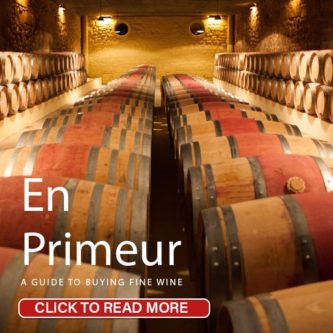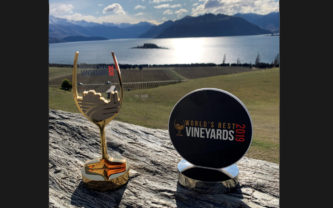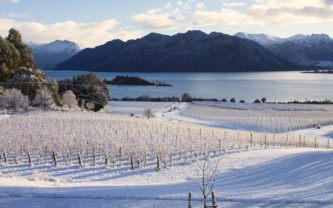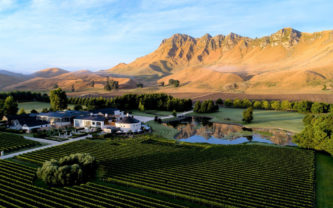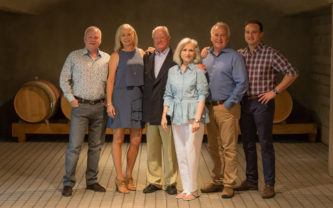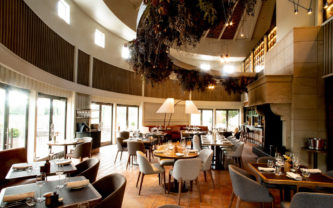At the Pinot Noir New Zealand 2025 conference, David Allen MW delivers the data on where New Zealand Pinot Noir stands in the world.
Nat Sellers, Wine-Searcher | 14-Feb-2025
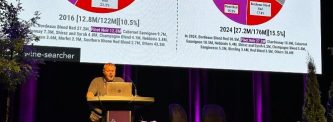
It’s all very well making great Pinot, but what if nobody knows that is what you do?
On day three of the New Zealand Pinot Noir 2025 conference held in Christchurch, Wine-Searcher’s wine director David Allen took to the stage to talk everything data, particularly with respects to the grape’s worldwide reach and the supply and demand within key markets – and particularly how New Zealand Pinot was faring.
Using Wine-Searcher’s vast database of offers and price history broken down by both product, grape and region, Allen was able to extract where New Zealand Pinot Noir is now, with a direct comparison to where it stood eight years ago at the last New Zealand Pinot Noir conference in 2017.
However, before getting to the nitty gritty of New Zealand Pinot Noir, Allen produced some facts to give a general overview of where Wine-Searcher was in its global capture of wine and spirits data.
Today there are currently 14.7 million live offers for wines and spirits listed on Wine-Searcher – compared to the 6.7 million eight years ago. This is partly down to there simply being more products on the market; however, Allen noted, it is also down to Wine-Searcher’s greater ability to collect offers. Technology has simply gotten better.
Making up these 14.7 million offers are more than 850,000 products being listed by 37,500 merchants and auctions across 130 markets.
Every month, Wine-Searcher receives roughly 5 million unique users trawling the site for wine.
How many of those unique users are looking for Pinot Noir? Allen was happy to provide the answers.
In 2016, there were 12.8 million searches for Pinot Noir wines within 122 million wine searches worldwide – making up a total of 10.5 percent.
In 2024, there were 27.2 million searches for Pinot Noir within 176 million wine searches worldwide, accounting for 15.5 percent. A not insignificant increase, with the majority concentrated in the US.
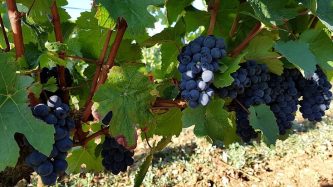
When it comes to the number of offers for Pinot Noir listed on Wine-Searcher, the numbers tell more of the same story.
Back on 15 December 2016, there were 0.5 million offers for Pinot Noir Wine within the 5 million offers for wine worldwide, with tiny dark grape accounting for 9.5 percent of all offers.
Nine years later on 15 December 2024, there were 1.1 million offers for Pinot Noir wines within 10 million offers for wine worldwide, making up 11.5 percent.
Both sets of figures show an increase in both interest and offers for the grape variety, with it claiming an ever larger market share as the years rolled on by.
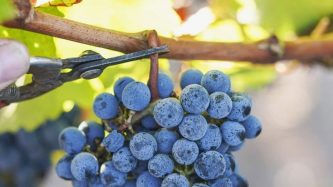
Conversely, during the same time frame, other grape varieties shuffled. Big red Bordeaux blends, for example, slipped from claiming 22.3 percent of searches back in 2016, to 17.4 percent in 2024.
Chardonnay, however, that other great Burgundian variety, claimed 6 percent of searches back in 2016, but snaffled 10.3 percent in 2024, reflecting the often commented-on rise of Burgundy while Bordeaux continues to flail.
However, regarding those 2024 search stats Pinot Noir may be on the rise, but it won’t be evenly across the globe, so where are its main fan clubs?
Well, as Allen presented, France – naturally – accounted for the majority of searches, claiming 22.5 percent, while Hong Kong came in at a close second with 21.4 percent. China sat at 20.8 percent, while the UK and New Zealand sat at 15.5 percent and 15.3 percent respectively, and the US and Australia claimed 13 percent each.
Please bear in mind, the above facts and figures are all still pertain to any Pinot Noir from anywhere in the world.
Back to NZ
Allen then switched his focus firmly to New Zealand and where its Pinot Noir stood in the global market. When it comes to the 2024 searches for New Zealand wines broken down by variety, 35 percent unsurprisingly went to Kiwi stalwart Sauvignon Blanc, while Pinot Noir came in at a close second with 32.4 percent.
However, Sauvignon Blanc has dropped off from its giddy 45 percent back in 2016, while Pinot Noir has risen, albeit marginally. Chardonnay, however, claiming 12.6 percent, has also seen a slow but steady rise.
When it comes to offers, however, the figures fall sharply out of sync. The 2024 figures show 45.1 percent offers for New Zealand wine are for its Sauvignon Blanc, with just 20.7 percent for Pinot Noir, and 9.4 percent for Chardonnay. While Sauvignon Blanc has seen its offers increase from 2016’s 39 percent, Pinot Noir has seen it fall from 24 percent – despite the increase in interest – while Chardonnay has flat-lined.
Where these offers have been made has also changed dramatically. Back in 2016, the USA had the most offers at 28.4 percent, with New Zealand second with 22.4 percent, while the UK claimed 16.6 percent and Australia 10.5 percent.
In 2024, these figures have seen a dramatic shift with the USA now offering a whopping 44 percent and New Zealand increasing slightly to 27.7 percent. However, both the UK and Australia had dropped to 6.1 percent and 6.5 percent respectively. This reflected a comment made by Stephen Wong MW who noted that UK restaurant lists were largely failing to feature New Zealand wines.
Overall, however, since 15 Dec 2016 when there were 83K offers for New Zealand wine, making up 1.6 percent of the 5 million offers for wine worldwide, there has – as of 15 Dec 2024 – been an increase to 175K offers of New Zealand wine within 10M offers for wine worldwide, claiming 1.8 percent, showing slow but steady growth.
As Allen noted, there were a few key takeaways – chiefly the rise of the Burgundian varietals, and how that places New Zealand in good stead. As well as the opportunity to target both the lower pricing tiers as well as the upper, where the big Napa giants lurk.
Finally, a message that has been drummed in over the course of the past three days by various speakers – but one worth listening to. The world is keen, ready and waiting but ever so slightly deaf, and New Zealand Pinot Noir just needs to raise its voice.




